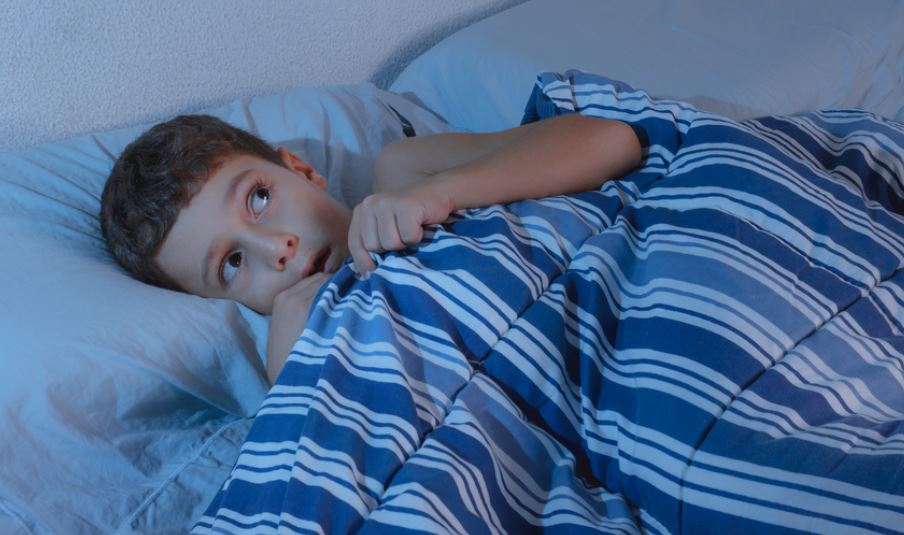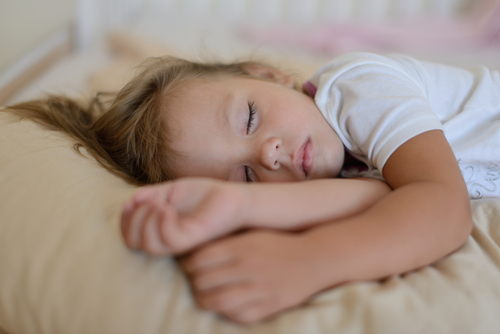
When we hear the words ‘nightmare’ or ‘night terror’, we have mainly negative associations to frightening or scary moments for our child during their sleep. Most parents have experience of being woken up in the middle of the night following a cry-out from an upset child, who has been jolted from their sleep after what has felt like a very ‘real’ bad dream for them!
There is nothing nice about bad dreams, nightmares or night terrors; however, the reality is they are part of our sleeping experience and can come and go for both adults and children. We can’t necessarily control either, but there are a number of things we can do to comfort a child when they occur, and parents can help to monitor and manage these night terrors.

How sleep works
From about age 3-4 months, babies begin a pattern of sleep were they go from a light sleep to a deep sleep, continuously changing over and back, up to 25 times a night! This is the common sleep pattern for children and adults as well. When we are in a light sleep, our brains are as busy as they are when we are awake, and we also dream during a light sleep. When we fall into a deep sleep, the brain activity reduces significantly, and our bodies take a break to replenish and revitalise. It’s usually during a deep sleep that a child will experience a night terror. When we talk about nightmares and night terrors, they are two very different experiences that can affect a child in very different ways during the course of a night’s sleep.
Nightmares versus night terrors
Nightmares can start between the ages of 3 and 6 years but sometimes occur for younger children as well. These are what our children describe as ‘scary dreams’, that can often wake them up - and to them, they feel very real. Depending on their age, a lot of children find it hard to go back to sleep, because they can’t tell the difference between reality and the dream. For some, this can cause upset or anxiousness at bedtime, and your child may refuse to be left alone or go asleep at all. The nature of these dreams often reflects their developmental stage; so, for a small child, it might be about being separated from their parent, getting lost, or scary monsters; for an older child, it maybe about something they have seen on TV, or conversations they had that day.
The major difference is that nightmares usually occur during the second half of the night, and once awake, the child is usually fully aware and is able to share the details of this scary dream with the parent. However, when a child has had a night terror, they’re not awake, although they appear to be - and they usually cannot remember any of it!

Night terrors mainly occur in early childhood. Although rare, they are caused by over-arousal of the Central Nervous System during sleep (CNS). This may happen because the CNS, which regulates sleep and waking brain activity, is still maturing. Night terrors happen during the first part of the night, usually before midnight. For some children, their breathing and heartbeat might speed up, and sometimes they can react with physical movement such as kicking or punching – very likely they will be screaming and shouting, all the while they are still actually asleep. After a few minutes, or sometimes longer, a child calms down and returns to sleep.
How to help your child?
Night terrors
For parents who have experienced their child having a night terror, they describe them as quite upsetting and, at times, overwhelming. There is no quick-fix; however, the best you can do is be patient. Protect your child by making sure they don’t hurt themselves; remove any toys or books near to them; avoid holding them, if you can. Children are often left confused or have difficulty settling back to sleep if awoken, so avoid this, too, if possible. This is not a time to discipline. To help prevent night terrors in the first instance, keep bedtime routines consistent, and avoid late nights to allow for plenty of rest (7-8pm is the recommended time for a child to be in bed asleep). To reduce your own worry, the more you understand about night terrors, the more reassuring it will be.

Nightmares
Sometimes there is no easy solution to bad dreams, and a child will just grow out of them; however, in the meantime, there a few things that may be reassuring to parents.
Like above, try to encourage a positive, calm and consistent routine at bedtime, avoiding late nights. Spending that special one-on-one time can alleviate stress, and comfort your child by you just being there; comfort is, for most, all they want and need, especially when the call comes in the middle of the night. Chat about their dreams during the day as often as they occur, and you’ll find that this allows your child to separate the dream from reality. Validate how they must feel, let your child know that you understand, and remember that it feels VERY real to them. If they are old enough, chat about what you can do together to help if they are worried about something.
To distract or to encourage ways for your child to move on from the nightmares, purchase or make a dreamcatcher together. This is a Native American tradition and can be put up by their window to ‘catch’ the bad dreams. Another creative way is to draw a picture or write words about the dreams, place in a deflated balloon, blow it up and let it fly up to the sky!

Practice being calm together – the more relaxed, rested and calm your child is, the easier it will be for them to fall asleep. Use breathing techniques and soft music before bedtime; introduce a night light in their bedroom if it’s more reassuring for them.
As we know, children go through many stages and phases in their lives. No matter what these may be - including nightmares and night terrors – they grow out of it and move on to the next thing! If you are concerned, speak to your GP, who will talk you through the best options for your child.
Aoife Lee, Parent Coach for Giraffe Childcare






